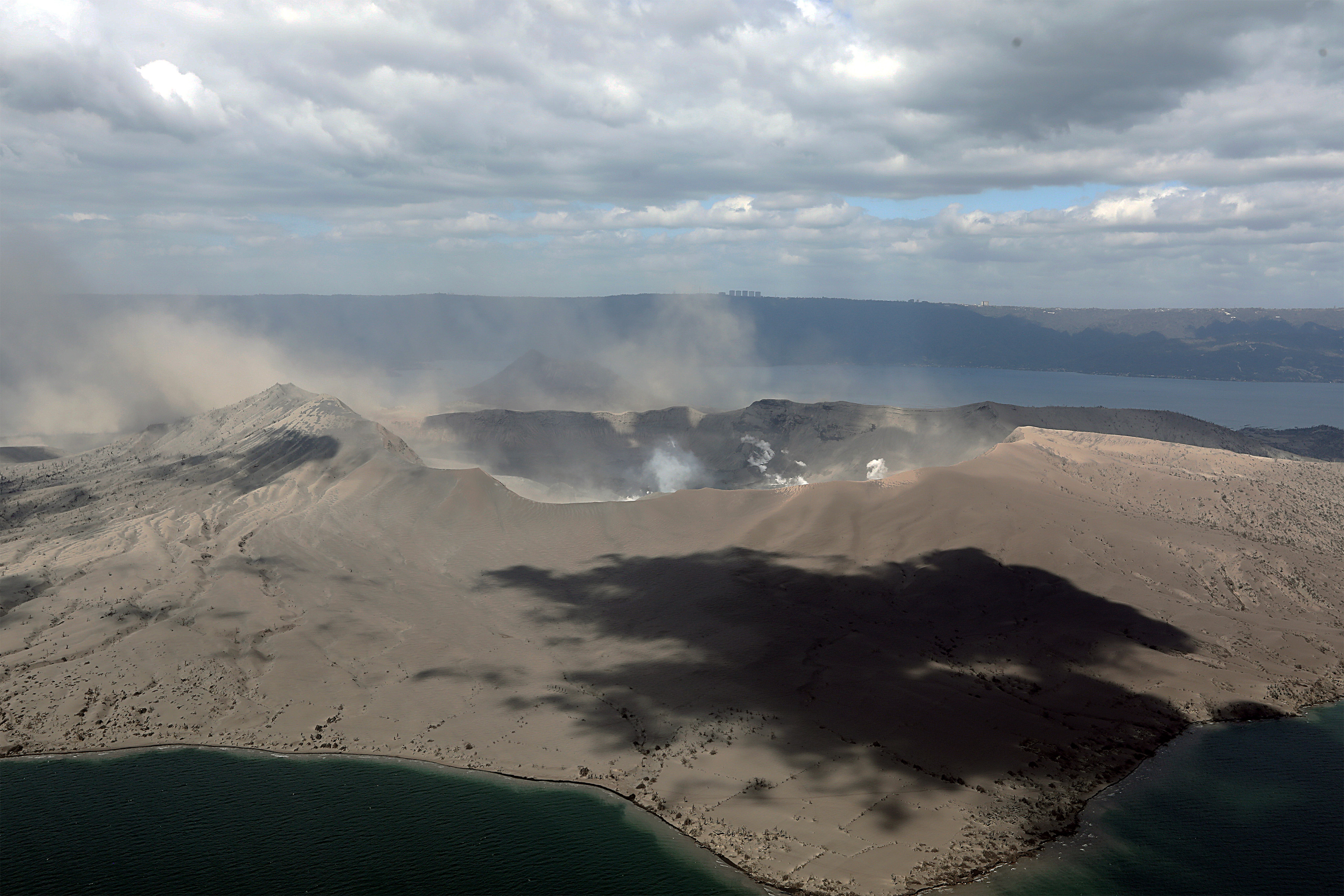Headline
Taal volcanic quakes, sulfur emissions continue to decline

FILE: Aerial shot of Taal Volcano on board a Philippine Air Force’s (PAF) UH-1 Huey helicopter on Tuesday (Jan. 21, 2020) during the PAF and Joint Task Force-Taal aerial reconnaissance at Taal Volcano. (PNA photo by Joey O. Razon)
MANILA — Volcanic earthquakes and sulfur dioxide (SO2) emission continue to decline in Taal, the Philippine Institute of Volcanology and Seismology (Phivolcs) reported Thursday.
Average SO2 emission for the past 24 hours was “below instrumental detection”, compared to 55 tons from the previous day.
There were 132 volcanic earthquakes, including three low-frequency events and 11 harmonic tremors lasting for two to three minutes.
Figures are still lower compared to 156 volcanic quakes, two low-frequency events and 18 harmonic tremors recorded the previous day.
The earthquakes signify magmatic activity beneath the Taal edifice that could lead to eruptive activity at the main crater.
Taal Volcano remains under Alert Level 3, which means sudden steam-driven and weak phreatomagmatic explosions, volcanic earthquakes, ashfall, and lethal volcanic gas expulsions may still occur in areas within Taal Volcano Island and nearby lake shores.
Meanwhile, steam-laden plumes emissions with a height of 50 to 100 meters were recorded for the past 24 hours.
Phivolcs reiterated that entry into the Taal Volcano Island, as well as into areas over Taal Lake and communities west of the island within a 7-kilometer radius from the main crater must be strictly prohibited.
People are advised to observe precautions due to ground displacement across fissures, frequent ashfall, and minor earthquakes.
Likewise, local government units are advised to assess areas outside the 7-kilometer radius for damages and road accessibilities and to strengthen preparedness, contingency and communication measures in case of renewed unrest.
Aviation authorities are also advised to caution pilots against flying close to the volcano, as airborne ash and ballistic fragments from sudden explosions and wind-remobilized ash may pose hazards to aircraft.





















